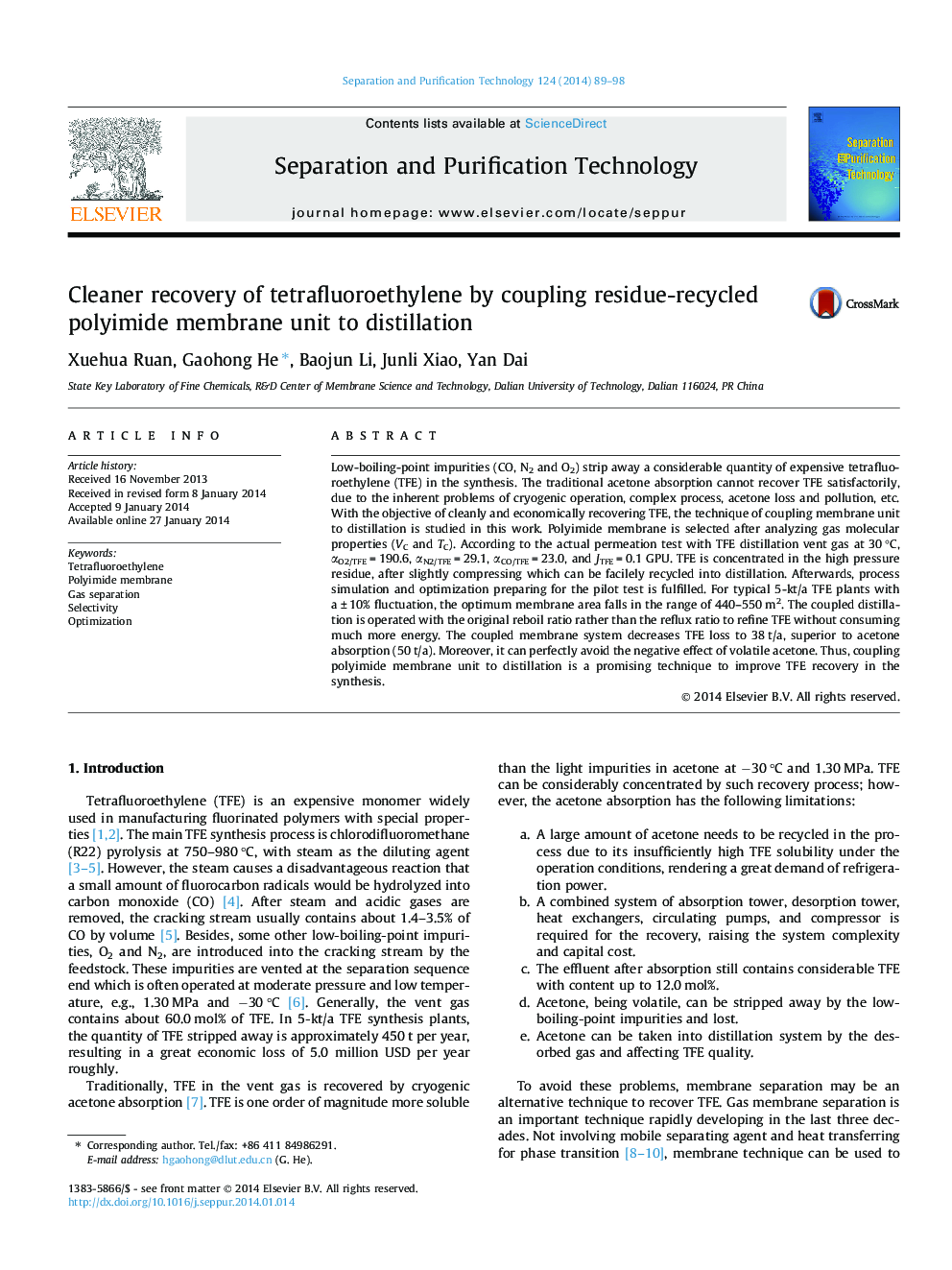| Article ID | Journal | Published Year | Pages | File Type |
|---|---|---|---|---|
| 641203 | Separation and Purification Technology | 2014 | 10 Pages |
Abstract
Low-boiling-point impurities (CO, N2 and O2) strip away a considerable quantity of expensive tetrafluoroethylene (TFE) in the synthesis. The traditional acetone absorption cannot recover TFE satisfactorily, due to the inherent problems of cryogenic operation, complex process, acetone loss and pollution, etc. With the objective of cleanly and economically recovering TFE, the technique of coupling membrane unit to distillation is studied in this work. Polyimide membrane is selected after analyzing gas molecular properties (VC and TC). According to the actual permeation test with TFE distillation vent gas at 30 °C, αO2/TFE = 190.6, αN2/TFE = 29.1, αCO/TFE = 23.0, and JTFE = 0.1 GPU. TFE is concentrated in the high pressure residue, after slightly compressing which can be facilely recycled into distillation. Afterwards, process simulation and optimization preparing for the pilot test is fulfilled. For typical 5-kt/a TFE plants with a ± 10% fluctuation, the optimum membrane area falls in the range of 440-550 m2. The coupled distillation is operated with the original reboil ratio rather than the reflux ratio to refine TFE without consuming much more energy. The coupled membrane system decreases TFE loss to 38 t/a, superior to acetone absorption (50 t/a). Moreover, it can perfectly avoid the negative effect of volatile acetone. Thus, coupling polyimide membrane unit to distillation is a promising technique to improve TFE recovery in the synthesis.
Related Topics
Physical Sciences and Engineering
Chemical Engineering
Filtration and Separation
Authors
Xuehua Ruan, Gaohong He, Baojun Li, Junli Xiao, Yan Dai,
